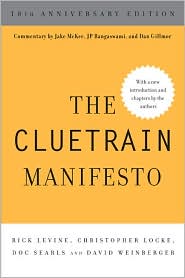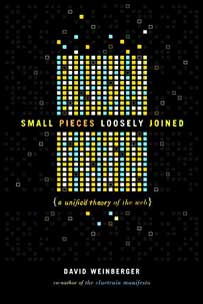February 21, 2008
[cyberinf] Designing for Integration and Collaboration
Linda Katehi (U of Illinois) asks how we can design an infrastructure that enables and sustain collaborative work. [Standard live-blogging disclaimer holds: hasty, error-free, subjective, unworthy.]
John Wilbanks of Science Commons talks about the cultural infrastructure that enables content to move so rapidly and easily around the Net. He’s posted his comments on his blog. [Thank you!] “We are swimming in cultural infrastructure for content, but not for knowledge.” He is going to argue against having an end goal for the Network. “The end goal is to create a world we cannot imagine.” We shouldn’t even be talking about “papers,” etc. on the Net. We should be talking about namespaces, not just ontologies. “If we can’t use the same names for things, we can’t have knowledge.” Intermediate goals: End to End. We should make it easy to get answers to difficult questions. And we need to build human capacity. We should focus on getting greater throughput so data turns into knowledge and innovation. [Read his remarks on his blog.]
Mackenzie Smith from MIT Libraries asks what a knowledge infrastructure is. Now that John has given us the why, she’s going to talk about the “what.” There are seven layers, she suggests:
1: Repositories.
2 : Data management.
3. Linking (interoperable semantics). We need namespaces and identifiers, and encoding standards (e.g., RDF), and ontologies like Object Reuse and Exchange.
4. Discovery. Finding data on the Web.
5. Delivery.
6. Social.
7. Business models. Policies.
The IT view, Mackenzie says, is what you can plug into the layers. She talks about some of the various tools available.
The organizational view: Different areas of the U are responsible for the various layers. The one layer generally no one is addressing is the business layer.
Chris Mackie (Mellon Foundation) wonders how many infrastructure “successes” are really just “steaming piles of integration.” What’s the right way to do design? Bottom up? Top down? Knowledge needs to emerge and for that it has to be bottom up and open. But that won’t get us where we need to be. We also need it to be top down; we need global optimization. How do we pull these things together?
We cannot allow our cyberinfrastructure to be so top-heavy that it flattens all other organizations, including community colleges, etc. We need the diversity of the educational ecology, Chris says.
Sara Kiesler (CMU) has been studying collaborative research projects. About a third are successful, but about a third are failures, and a third struggle. What surprised her was that the problems in collaborating were not due to differences in how different disciplines approach their work. The biggest problems were inter-institutional. The two institutions have different bureaucratic procedures, regulations and cultures. No one in the institutions watches out for the welfare of inter-institution collaborations. And they don’t like it if the budget goes to the other institution.
John: We need both top down and bottom up. The key is to make sure they use the same standards. Standardize around names and transactions. You want to make it easy to stitch them all together.
Q: This is the first time the full range of institutions has been brought up, probably because the attendees come from major research institutions. So, good to have acknowledged there are other types of educational institutions.
Q: Physicists are used to collaborating. And the funding agencies drove the senior scientists to collaborate. Don’t underestimate the role of the funding agencies.
In the context of U’s, are there any warnings the panel has for us?
Chris: The challenges to collaboration are getting more real all the time. E.g., IP issues prevent some collaborations.
A: There’s the centralize-everything clique, the decentralize clique. Any preferences?
Linda: The totally centralized one doesn’t work in the US.
John: You can’t order people to innovate. You have to build systems that enable explosive innovation, based on standards. Making control the default doesn’t work. Harvard’s Open Access policy switches the default to sharing, with an opt-out. I think that’s the right way, but we don’t have the evidence yet.
Mackenzie: The decentralized model is a little more maintainable.
Sara: The collaborations that succeed tend to be the ones that have some practice doing it.
Q: Collaborative technology is still bad. And IP gets in the way. Also, U-industry collaboration seems to work best when the academic wants to have an effect in the real world.
John: The standard contracts for the life sciences depends on your tax status. Every collaboration with a commercial entity, even at a very early stage, gets complex very quickly. A simple design decision has made this hard.
Q: How do you align interests for collaboration?
Sara: Interdependence.
Q: The right question isn’t decentralized or centralized. It’s what you’re going to do that’s between those two, because neither of those will work.
Mackenzie: Dropping a governance onto a project at the beginning can kill it. There are many approaches.
[I’ve begun to fade — didn’t get much sleep last night, and live-blogging is really tiring…








